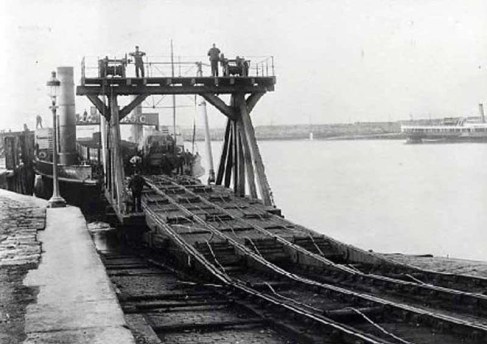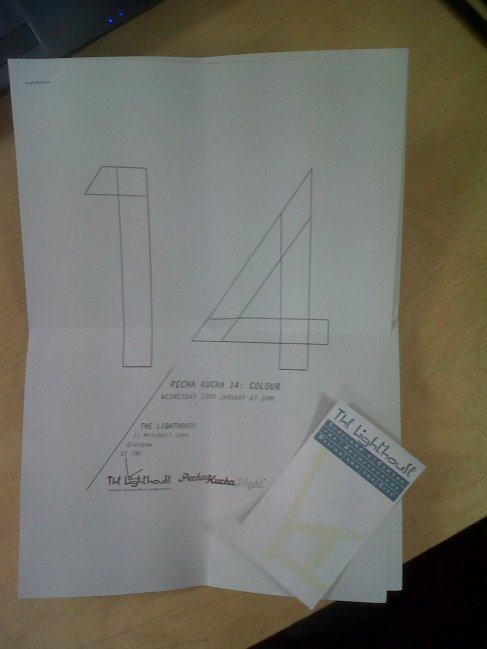Part of our design and technology course was to look into an area that has been influenced by, or has influenced, design. I chose to look into materials, and how design of consumer products has advanced as different materials and different processes have developed. One area that has revolutionised design, especially the physical form of products, is plastic. Initially I started looking into the origins of plastic, and what that meant for design and manufacture.
The first plastic, Parkesine, was invented in 1862. It was used in cutlery and ornaments as a replacement for ivory. The Hyatt brothers, in America, developed this to form Celluloid, which again was proposed as a replacement for ivory, this time in billiard balls. The next plastics to be invented were PVC, which has been used as an imitation for leather, and Bakelite, which was frequently used as a replacement for wood, especially in car interiors. Urea-formaldehyde was the first plastic that could be coloured, and it was often used to replicate marble. Similarly, moving towards the early 1930s, and the invention of perspex, which was used in aircraft cockpits and other screens as a replacement for glass.
It is clear from the early development of plastics that they were almost seen as a material that shouldn’t be displayed. They were all used to replace or imitate other materials in a more cost effective way. Bakelite especially was widely used throughout the 20s and 30s on radios as a mock-wood. For the designer of the time, this was an interesting phenomenon. The plastics were used due to the ease of which they could be moulded, and the speed they could mass-produce products.
This period is interesting in that design was moving towards mass-production and away from true craftmanship. It was a period, especially in America, where products were starting to become a status symbol, and therefore cheaper imitation products were in demand from consumers who wanted to appear more affluent than they were. It was a time when designers like Raymond Loewy were emerging, and creating a demand for products in ‘nice boxes’.
From a personal stand point, this period of time (late 20s and 30s) really interests me. There is a clear move towards consumerism and the birth of the ‘American Dream’ scenario. Designs are therefore becoming more about mass production, and therefore plastics are really coming to the fore, but are still being used to imitate other, more traditional, materials. There, to me, seems to be an element of dishonesty and disguise about designs of the time which is an interesting reflection of society and what was demanded.
The second of Bruce Peter’s talks was about what the future of travel may hold. This was done from a basis of when travel has advanced in the past. For example, the American post-depression period and subsequently the emergence of Raymond Loewy as a designer introduced the idea of styling products, and therefore the idea of ‘futuristic’ design. This idea of stylising products, and vehicles, led to trains becoming increasingly similar to planes, aesthetically. Likewise, planes became more like spaceships as each mode of transport attempted to look increasingly glamorous.
Above are several examples of plane-like trains; the Coronation Scot, which raced a plane from Glasgow to London, the German Rail Zeppelin and the Shinkansen in Japan. It is especially evident in the interior of the Shinkansen where the seating plan is very similar to that of the apparent glamour of aeroplanes.
It is interesting that it is apparently possible to predict the development of travel, especially aesthetically, by looking at a current more glamorous option. For example, it is feasible to predict that planes in the future will mimic current space shuttles, such as the Virgin Galactic. Likewise, the development of high-speed rail networks in Europe will perhaps further replicate the plane aesthetic. Perhaps.
I prefer to think that designers have a bit more influence than that. That developing technologies and materials will allow design to be furthered. That experimenting with processes will open up opportunities for products to push boundaries. That new ways of thinking will break current trends and bring newer, more interesting, modes of transport to the fore. I guess we just have to wait and see.
When I initially set up my blog, I was hoping to look into how all materials have affected design; how they have developed, and how that has allowed the form of products to change. Initially, when looking into the area, it was incredibly broad, so I decided to whittle it down to one specific area rather than focus on materials as a whole. To chose the area I will focus on, I did a bit of prior research into each of the main materials.
After looking briefly at materials across the board, I decided to focus on plastics, as initially it seems to be the least attractive material. It has connotations about being cheap and disposable, and I wanted to look deeper into how plastics have influenced design over the last century or so. Plastics have also not only affected the form of products, they have also influenced the technology. For example, silicon has been the material of choice used in semi-conductors since around the time of the Second World War. Additionally, plastics can be combined with other materials to create composites which have been used to replace metal in the bodywork of cars and even planes.
To me, plastics is the area that drew my attention initially, and the area that I felt I could learn most about in terms of relating it to design. The future of plastics also interests me due to the reliance on oil during the manufacture, and the fact that oil is becoming more and more expensive, and gradually running as a natural resource.
We have had two talks from Bruce Peter, a design historian at the Glasgow School of Art. The first of these talks was on intermodality of transport, and how it has developed through history. I won’t go into too much detail, but the essence of what Bruce was saying is that trade and economic growth need transport systems to operate, which leads to the development of how these transport systems link. In the past, longshoremen would carry goods from a ship to a train or vice versa, which is time consuming, costly and could lead to crime. This led to ways of running trains onto ships (for example the ‘Floating Railway’ on the Forth, above) and the development of shipping containers which could be transferred between modes quickly and limits access.
Standardisation in one of the main drivers of intermodality, it simplifies the process and therefore cuts time and cost. This was countered when British Rail and British Airways were privatised, leading to a more competitive environment, with fewer links between the respective companies. Travelling becomes increasingly tricky as you need to go with a certain company, and even when you get to your destination, there won’t be a transport link that is synched. It would be nice to have a train that arrived so you could immediately step onto a bus and then directly onto a plane, or something along those lines.
Essentially, standardisation is a more left-wing, socialist attitude, yet privatisation, individual aspiration and tourism is a more right-wing, capitalist stand-point. Intermodality is then caught somewhere in the middle; it needs standardisation for efficiency to be optimised yet competition between privatised companies renders it unfeasible. That may be simplistic, but it is an issue that needs to be addressed to improve efficiency of travel.
This week’s lecture was concentrating on the usefulness of rough engineering calculations to test the feasibility of concepts. I found this incredibly useful; instead of sitting for weeks developing a concept that may not work you can quickly check whether or not it is possible using some simple engineering equations. As an example, we concentrated on the energy used, and associated with transport. We were split into groups and given problem, using simple engineering equations we were to analyse the feasibility.
There were 3 problems; the energy used to get from London to Bangkok, the land needed to feasibly use bio-fuels and the comparison of fuel efficiency of trains versus planes. Me and Mikie had the task of comparing fuel efficiency (I won’t bore you with the calculations, they are in the image above if you’re dead keen). Essentially, we found that if trains moved at the same speed of planes they would be less efficient by a factor of 14. If they moved at the same altitude (i.e. where the air is thinner so less air resistance) they would still be less efficient by a factor of 2.4. This shows that despite trains being more efficient than planes, it is largely due to the fact they move at slower speeds. If they move at the same speed they are very inefficient, and therefore aren’t this pinnacle of efficiency that they’re often made out to be.
When applying a relatively quick calculation like this to a practical case, you can quickly analyse which concepts have scope, and which simply will not work. This is incredibly useful in the early stages of a project when trying to evaluate which one of a series of concepts to run with.
We had a talk from Phillips Gerson, who considered himself a ‘T-shaped engineer’ i.e. an engineer that had a broad knowledge of the design process and innovation phase along with an engineering knowledge. Phillips certainly seemed to have a deep knowledge of engineering, and a lot of his projects seemed to be heavily orientated towards the technical side of the process. He had been involved in designing beer cooling systems and air conditioning and then white goods. He went into great detail about his designs and achievements, but seemed to have a very cynical view on designers and especially innovation.
Most of his talk was very corporate, and seemed to be very bleak, dismissing smaller start-up businesses and saying there was no way they could survive. He was very set on the idea of working as a small cog in a large company, and if a smaller company came up with an idea they would just use it, irrespective of any patents that were in place. That outlook didn’t sit well with me. I wouldn’t consider myself naive, and I am aware that larger companies have a lot more power, both financially and legally, than smaller companies. What didn’t sit well with me was the sheer arrogance that he talked about stealing ideas, and that’s exactly what it is. Stealing.
There have been small start-up business before, and there will continue to be small start-up business in the future. The internet certainly helps these companies establish a market and I believe that, rather than small businesses becoming extinct, there will be more of them. That may be an optimistic outlook, but what’s wrong with that?
For design and manufacture, we need to present our final ideas as a Pecha Kucha, 20 slides for 20 seconds each. I haven’t really done anything like this before, so last week I went along to the Lighthouse (well worth a visit if you haven’t been) for a bit of inspiration. This event’s topic was colour, which was quite open and lead to a lot of variation in the presentations. They ranged from Professor Hannah Buchanan-Smith’s presentation on the way animals, particularly primates, see colour to Dr David Smith’s presentation on comic books through the decades. In between were several topics on fashion and art, with a particular highlight being Amy Whitten’s presentation on, ironically, the black and white branding of Recoat (http://www.recoatdesign.com/).
Although the presentations were interesting, for inspiration on how to do a Pecha Kucha I felt it didn’t really help. We have been encouraged to make our presentations memorable and unique, these however seemed fairly standard – although there were certainly topics that grabbed my attention more than others.
As a class we went to see the film ‘Design and Thinking’ at the GFT. The film was a documentary about the IDEO concept of ‘design thinking’. Although the actual idea makes sense to me, I felt the film didn’t really help with that, it was a bit more like a collage of out-there ideas and people trying too hard.
To me, design thinking is a skill, something which can be identified, valued and, to an extent, tested. It has become something that companies now value and look for, which is obviously a positive for designers. The film, however, seemed to undermine this aspect of the term. A lot of the film featured companies that were doing stuff and using ‘design thinking’ as justification. For example, one company featured had a theory that sitting on exercise balls and lying in hammocks was part of design thinking. To me that seemed ridiculous.
Instead of coming across as a saleable asset, it was made out to be a bit unsubstantiated. If I was an employer watching the film I would have dismissed it, and that worries me. To me, doing a degree which relies heavily on design, I want to be taken seriously. I want the design aspect to be as valued, if not more so, than the engineering side.
There has been a drastic decline in skilled manufacturing in Britain, along with large parts of the western world. Far Eastern manufacturing has made giant strides to match the quality of western companies. Larger labour forces in the Far East, combined with being able to manufacture at a fraction of the cost, has essentially priced Britain out of manufacturing.
One company which this demise is evident in is Brooks, a leather-based manufacturer which produces bike saddles. The saddles are hand-made, taking 3 days to complete one saddle, which represents the level of skill and precision needed during the manufacturing process. Brooks is one of the few companies in Britain that still produces such high quality products. It was apparent in the video that the employees were largely older, more experienced people. This example goes to show how extreme the demise of British manufacture is, an ageing workforce, a relatively slow process and a level of precision that means it is very hard to train apprentices. Training apprentices is a massive factor which has affected British manufacturing. Minimum wage has meant that a call centre employee can have salaries up to £6000 greater than an apprentice. The apprentices, although learning valuable skills, will find this gulf hard to ignore and therefore are likely to take the ‘easy’ job. There is little incentive to learn a trade in an industry that is already struggling to give people work.
Brooks was losing money, and it looked like it would become yet another British manufacturer that had to close. The emergence of the ‘retro’ fashion, especially with bikes, has allowed Brooks to make a resurgence as the demand for their saddles increased. By sticking to their core values, and avoiding attempting to replicate Far Eastern manufacture, Brooks have managed to utilise their reputation to yet again become a leader in the bike saddle market. Although this example has worked out well, it is in no small part down to fashions, which obviously are relatively short-lived. It will be interesting to see if Brooks can continue to grow or whether this is just a false dawn in their ultimate downfall.










